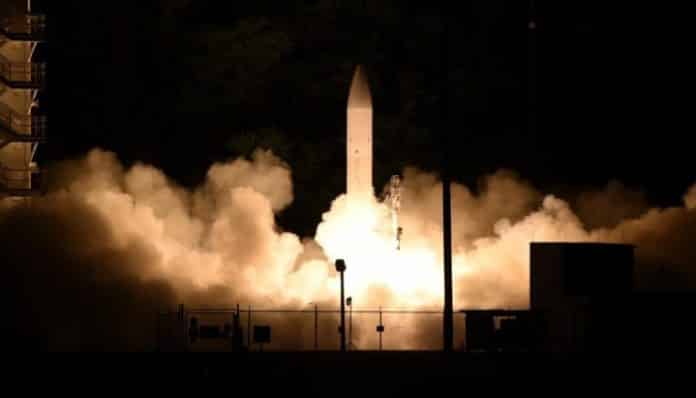
May 27 (UPI) — The Navy successfully tested a hypersonic rocket motor in Utah Thursday.
According to a press release from the branch, Navy Strategic Systems Programs conducted a live-fire test of the first stage solid rocket motor as a step toward developing a common hypersonic missile that would be fielded by the Navy and the Army.
The missile tested in Promontory, Utah, Thursday will be combined with a Common Hypersonic Glide Body to create a common hypersonic missile, which can be tailored for launch from sea or land.
The Department of Defense successfully tested the CHGB in March 2020 in Hawaii.
The Navy will design the missile and the Army will lead production, the Navy’s announcement said.
Hypersonic weapons are capable of flying at speeds greater than five times the speed of sound, are highly maneuverable and are able to operate at varying altitudes.
The Pentagon has identified hypersonic weapons development as a key priority, with officials announcing in February that they plan to field offensive hypersonics by the early- to mid-2020s.
A March report from the Government Accountability Office said the Pentagon’s hypersonics development programs should better define the roles and duties of those in leadership.
It noted that development of hypersonic weapons and related technologies has cost about $14 billion since it started in 2015, through 70 identified efforts.
China and Russia have also invested heavily in hypersonics, with Russia announcing the successful test-firing of a hypersonic missile in October 2020.






